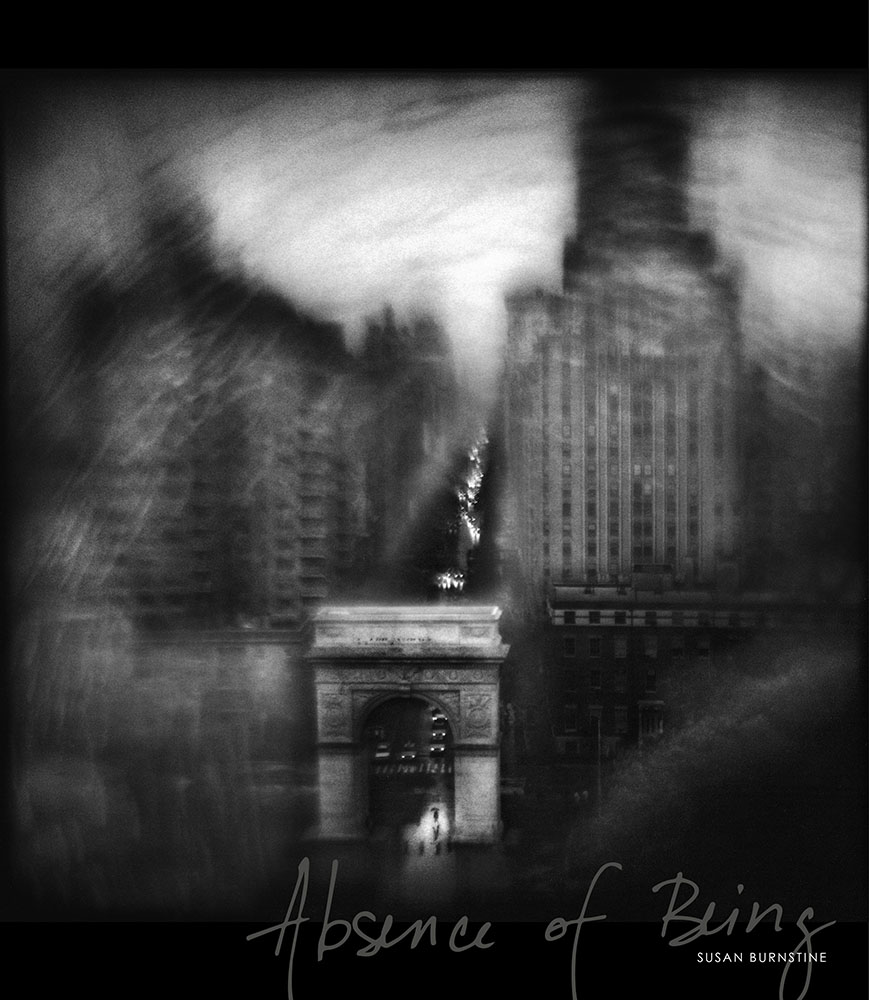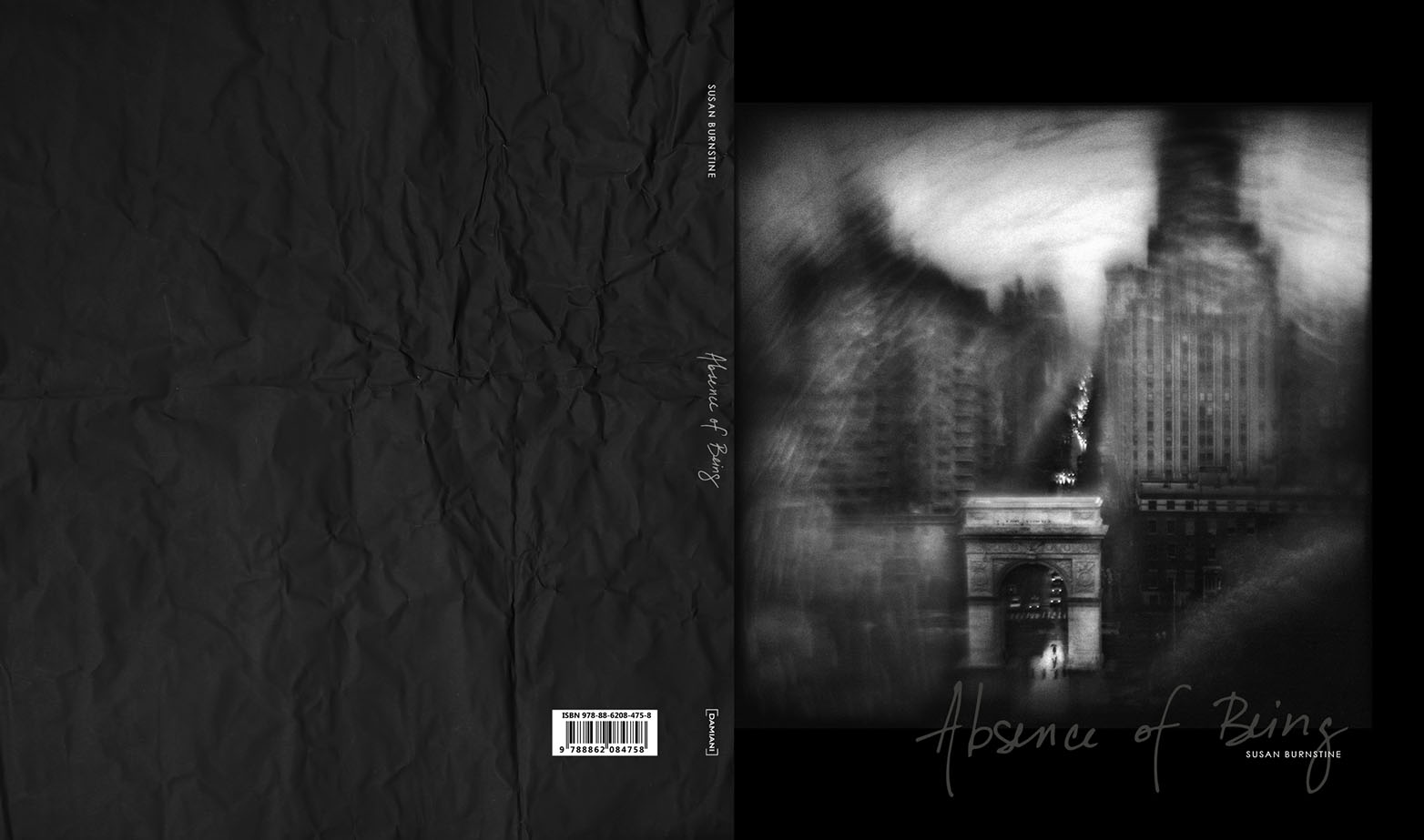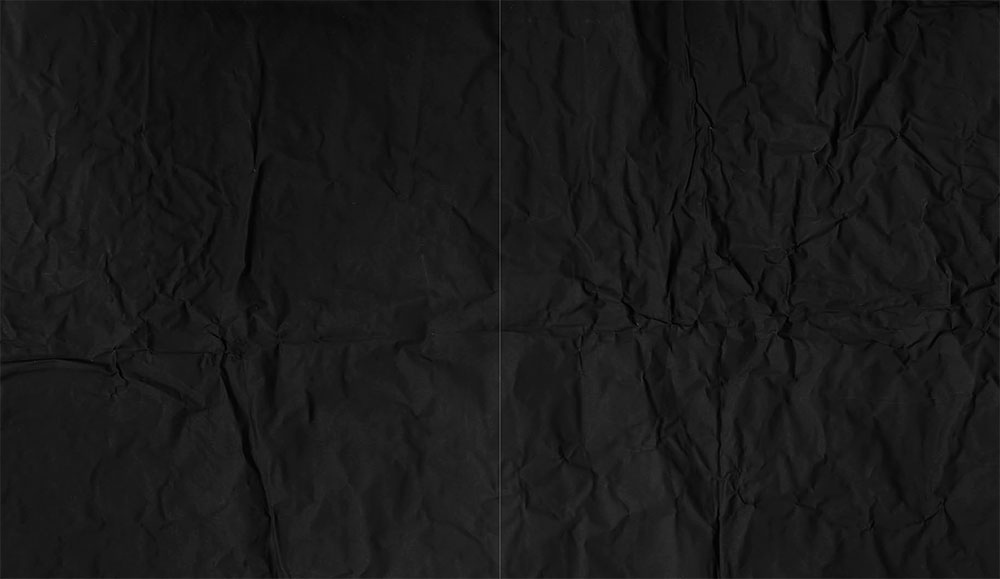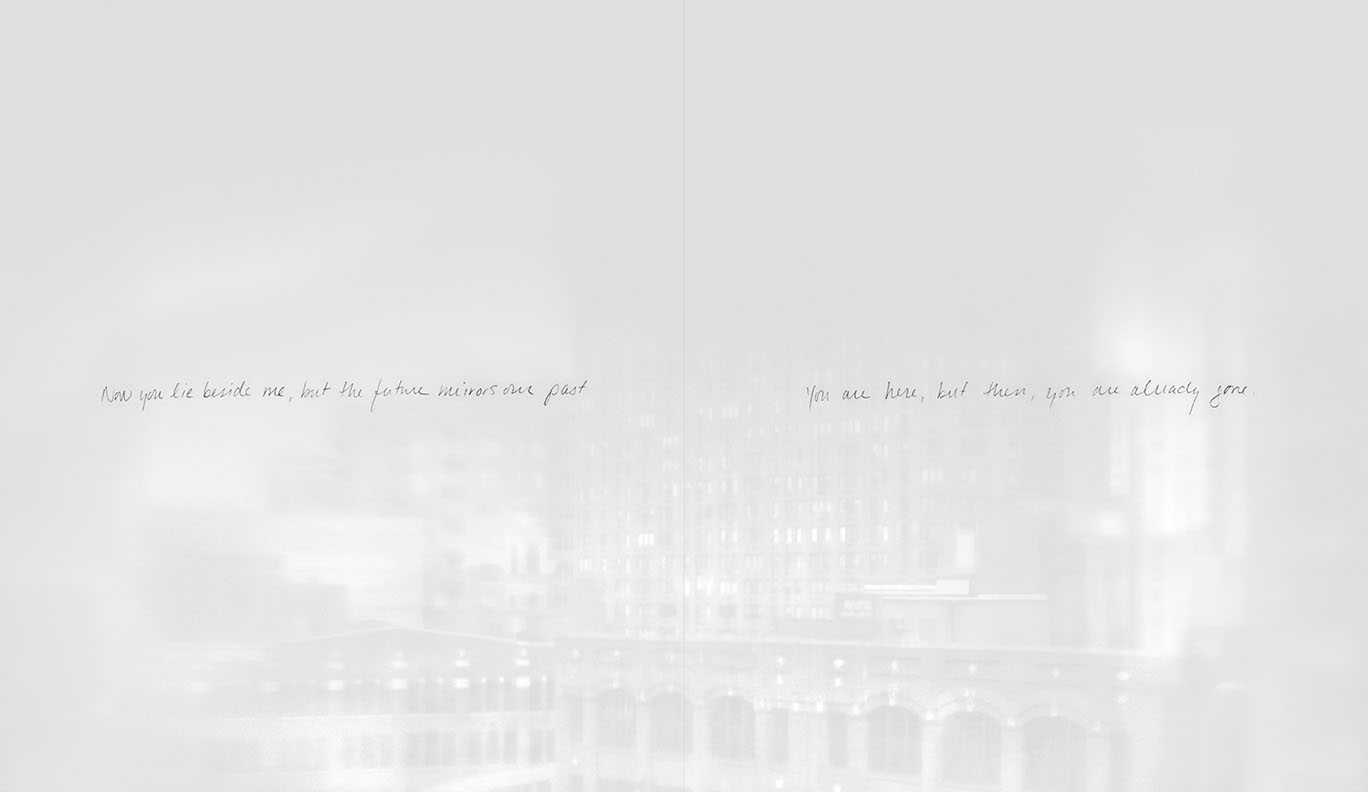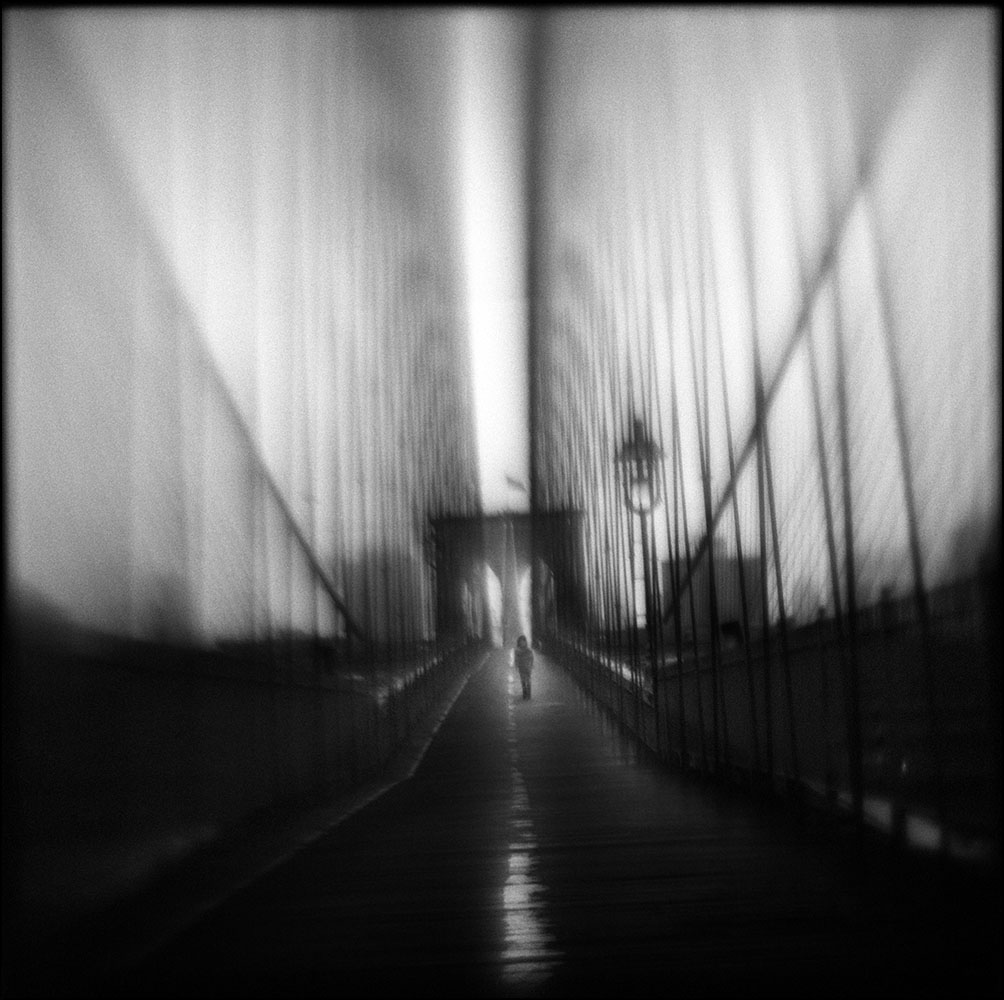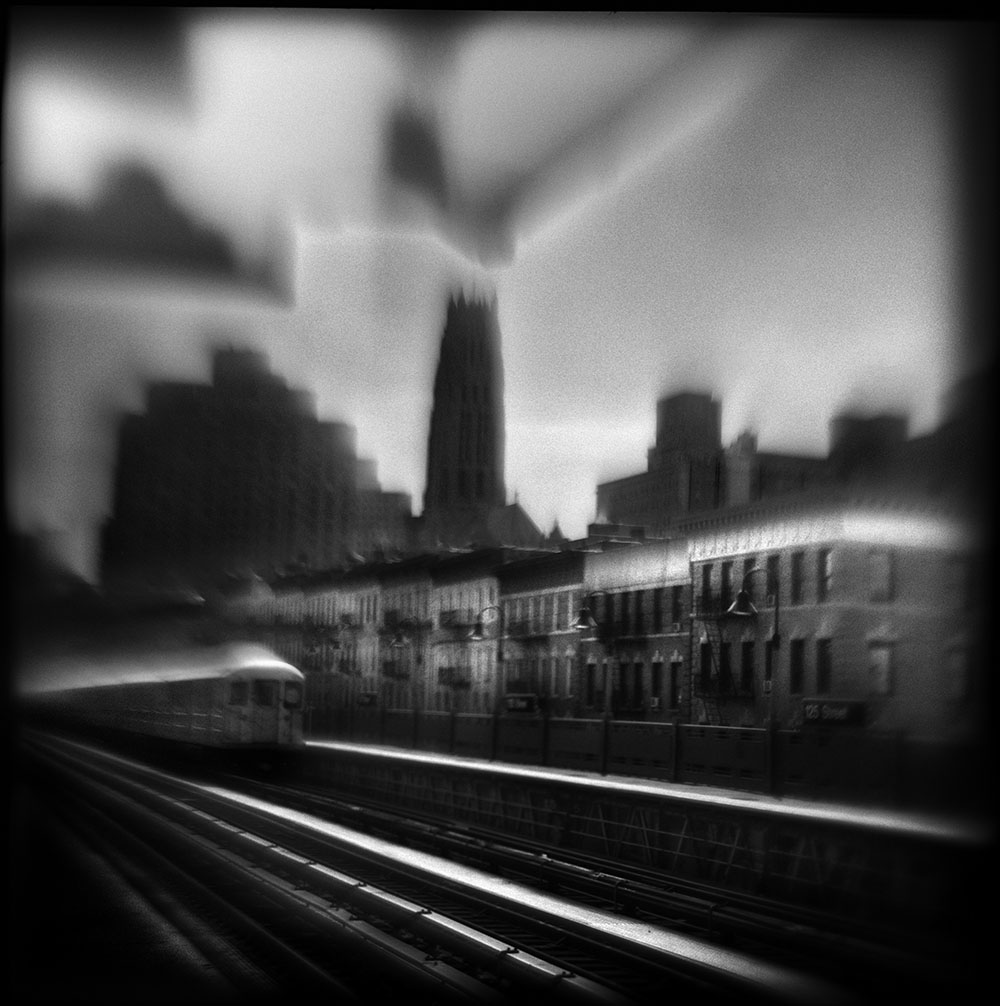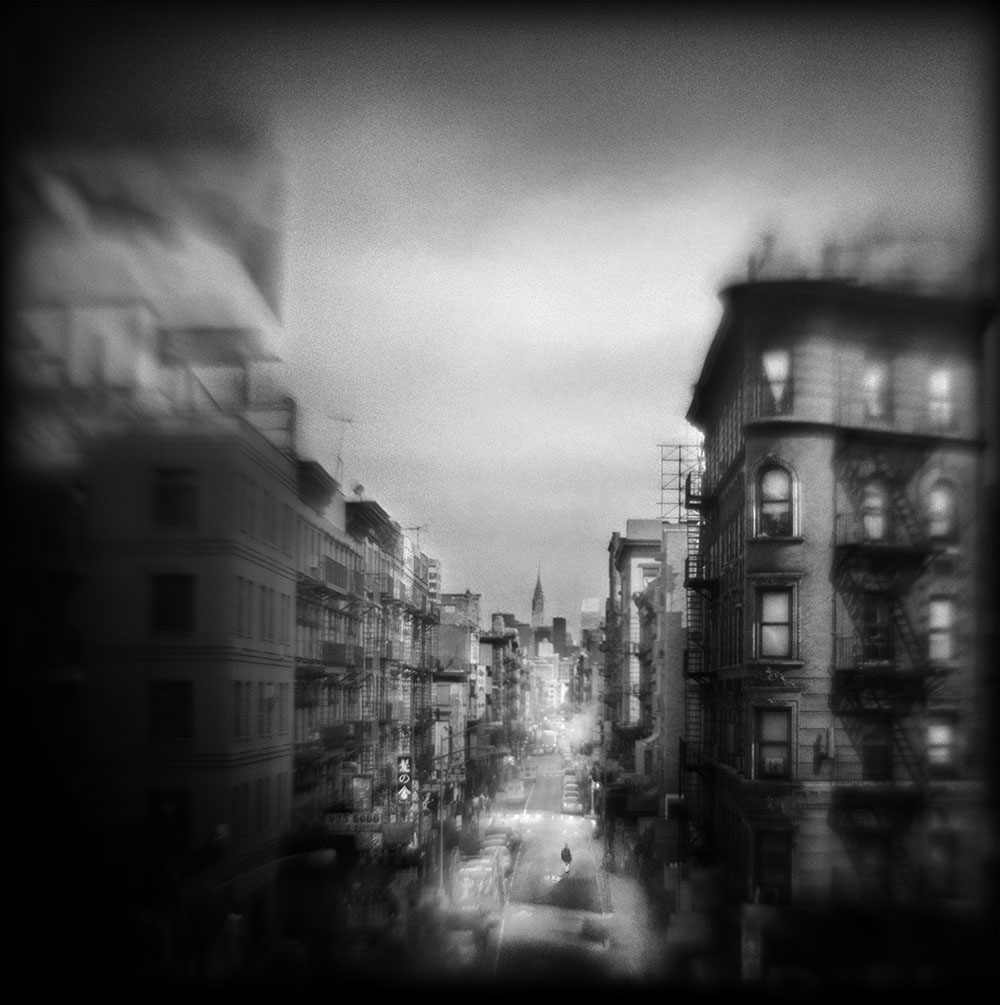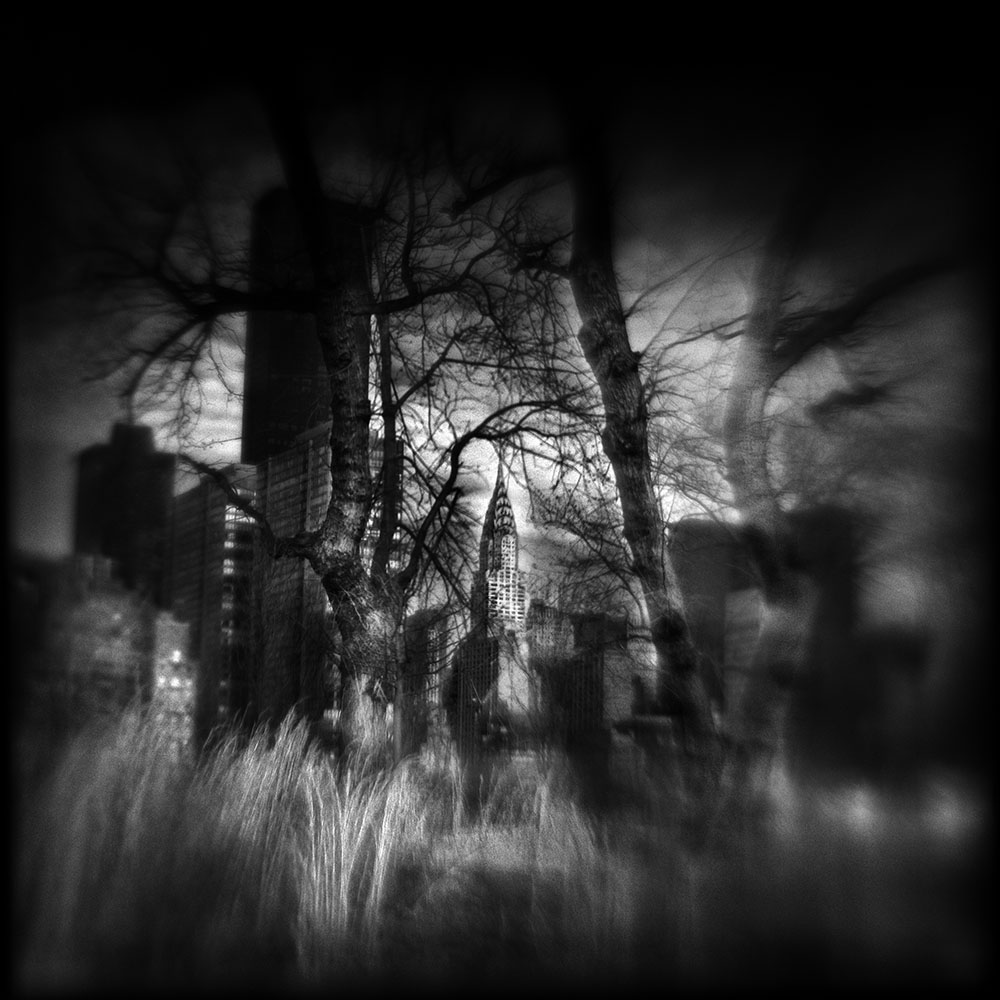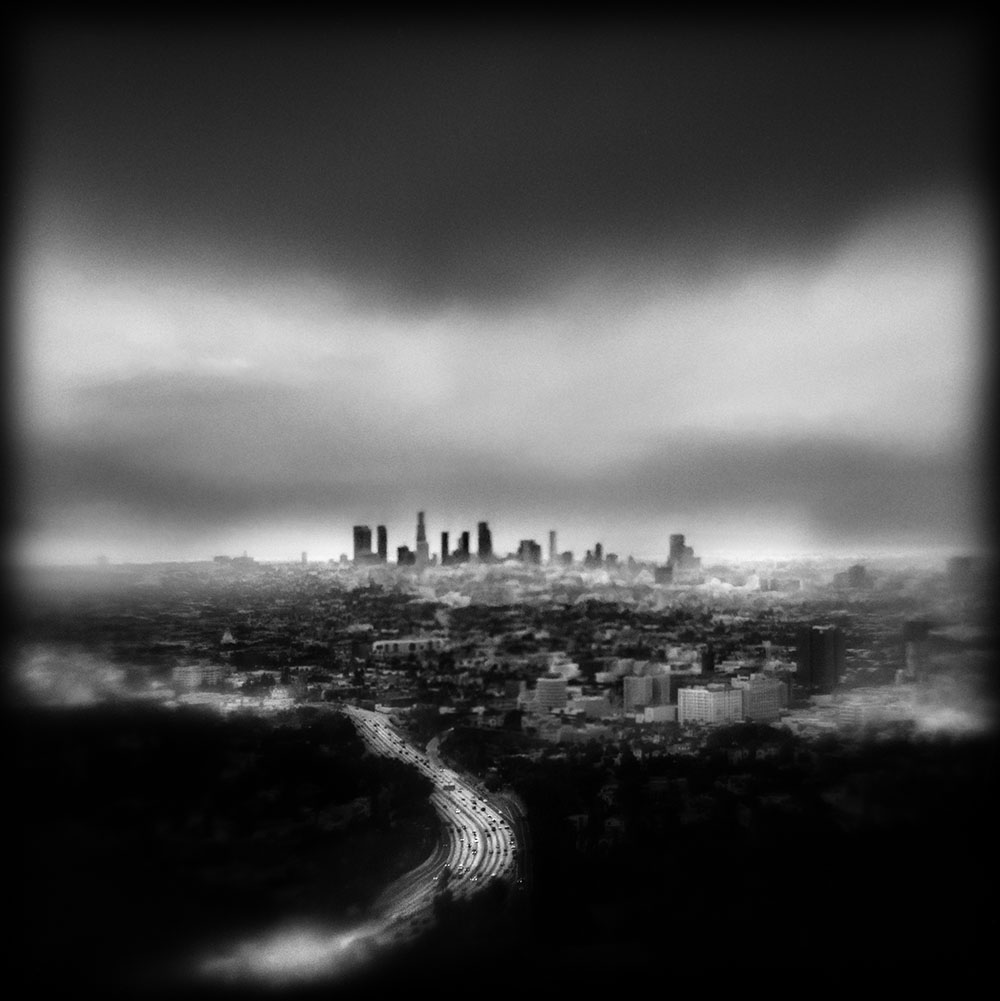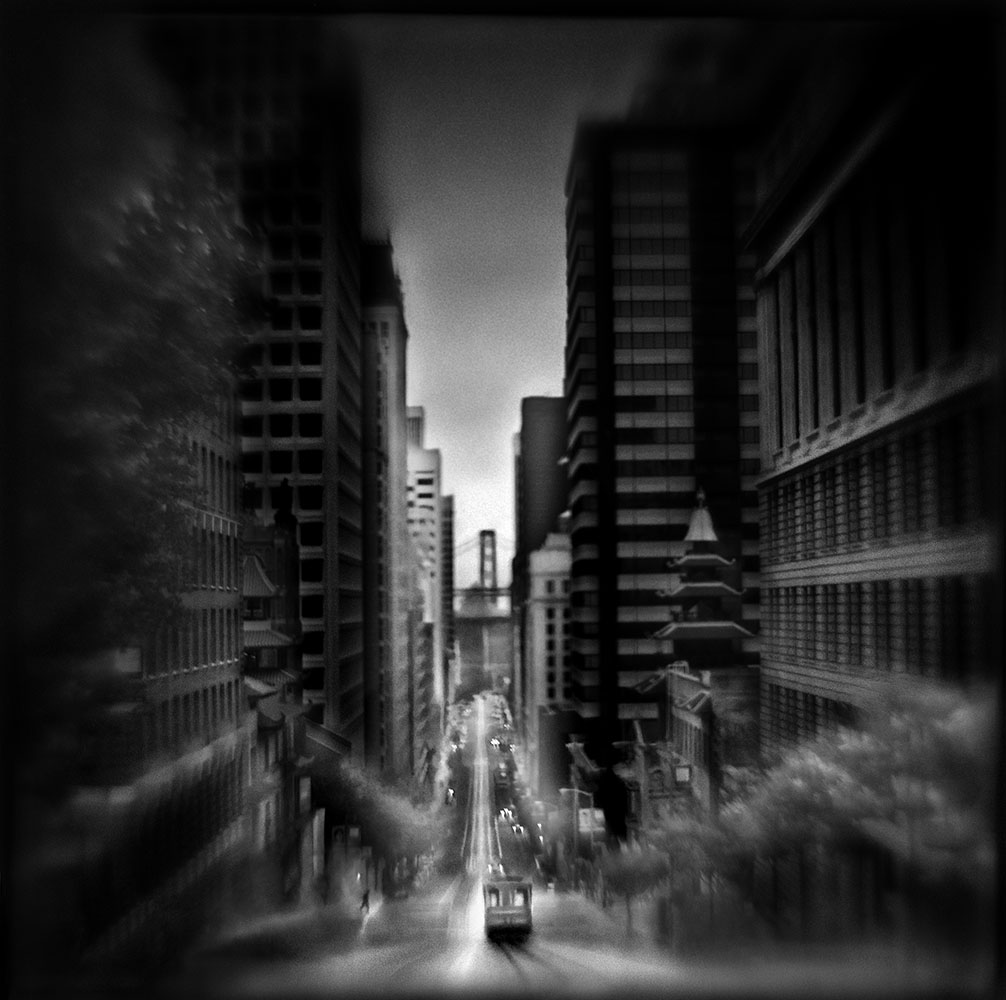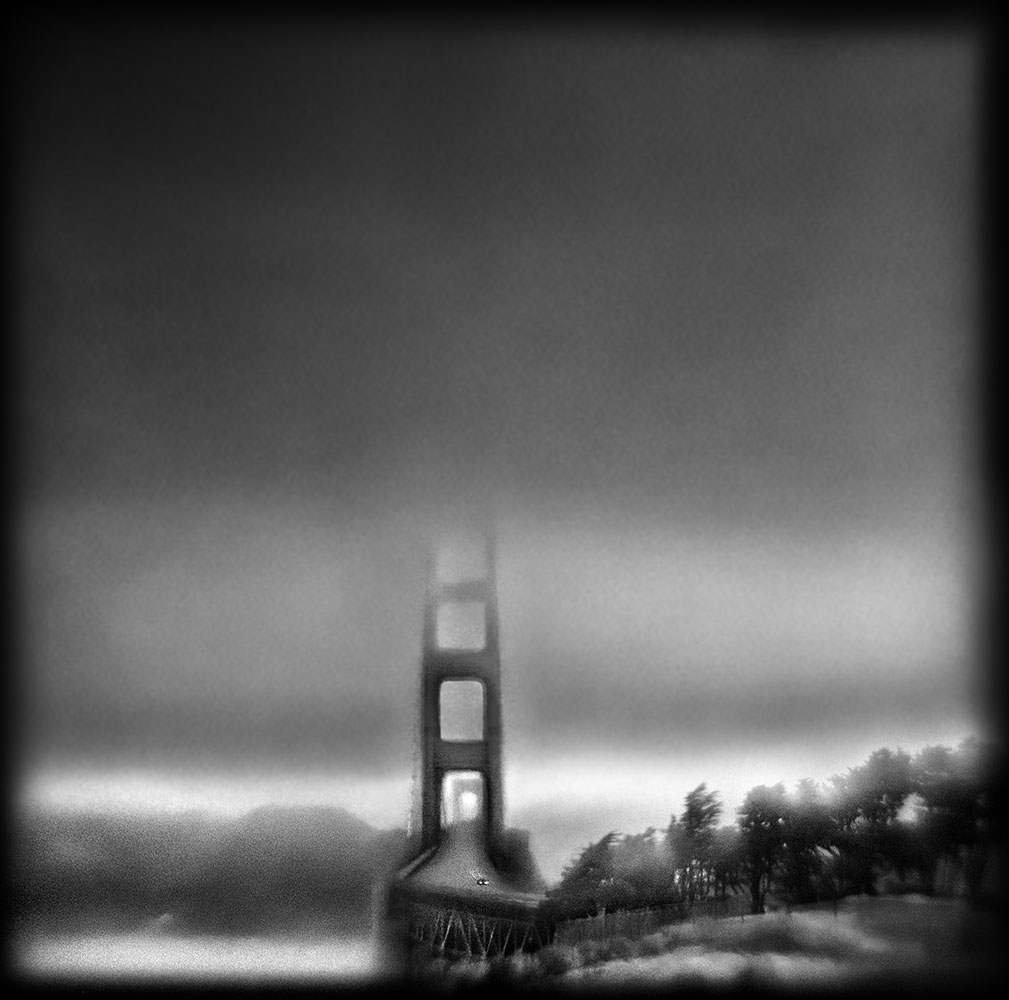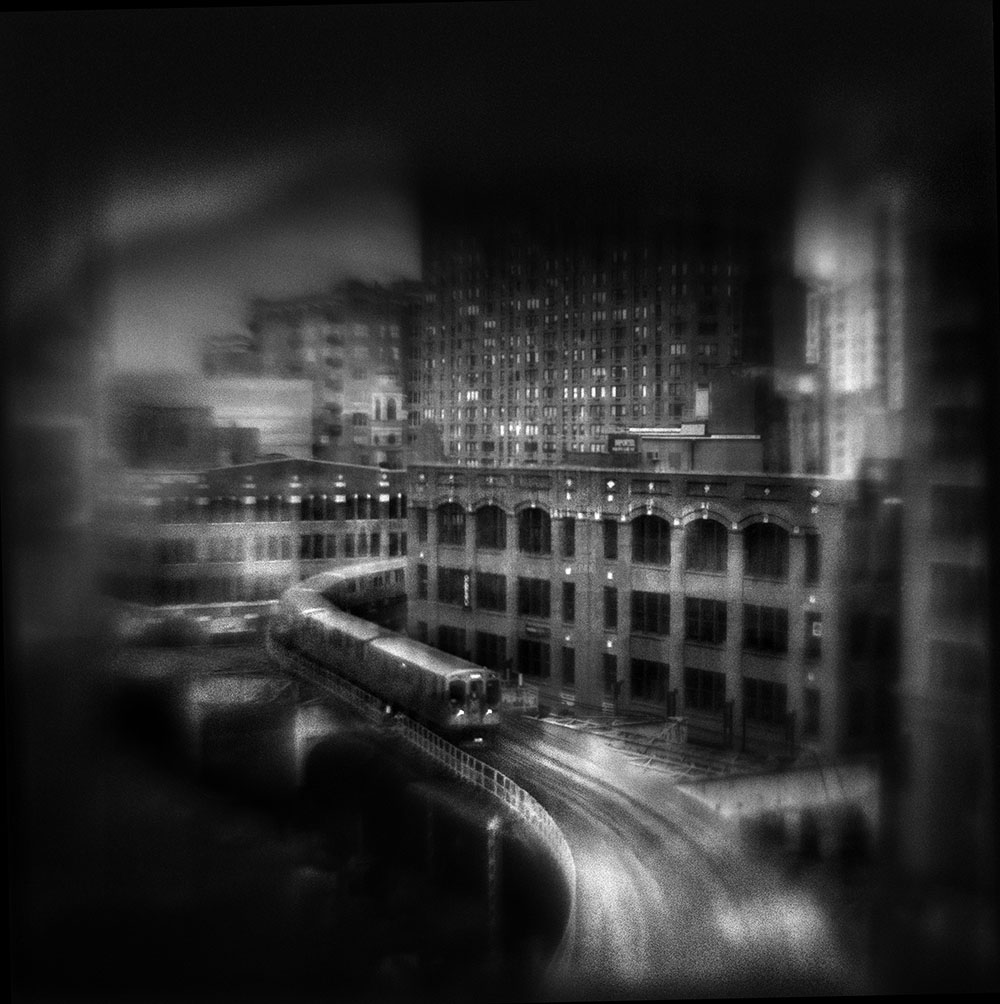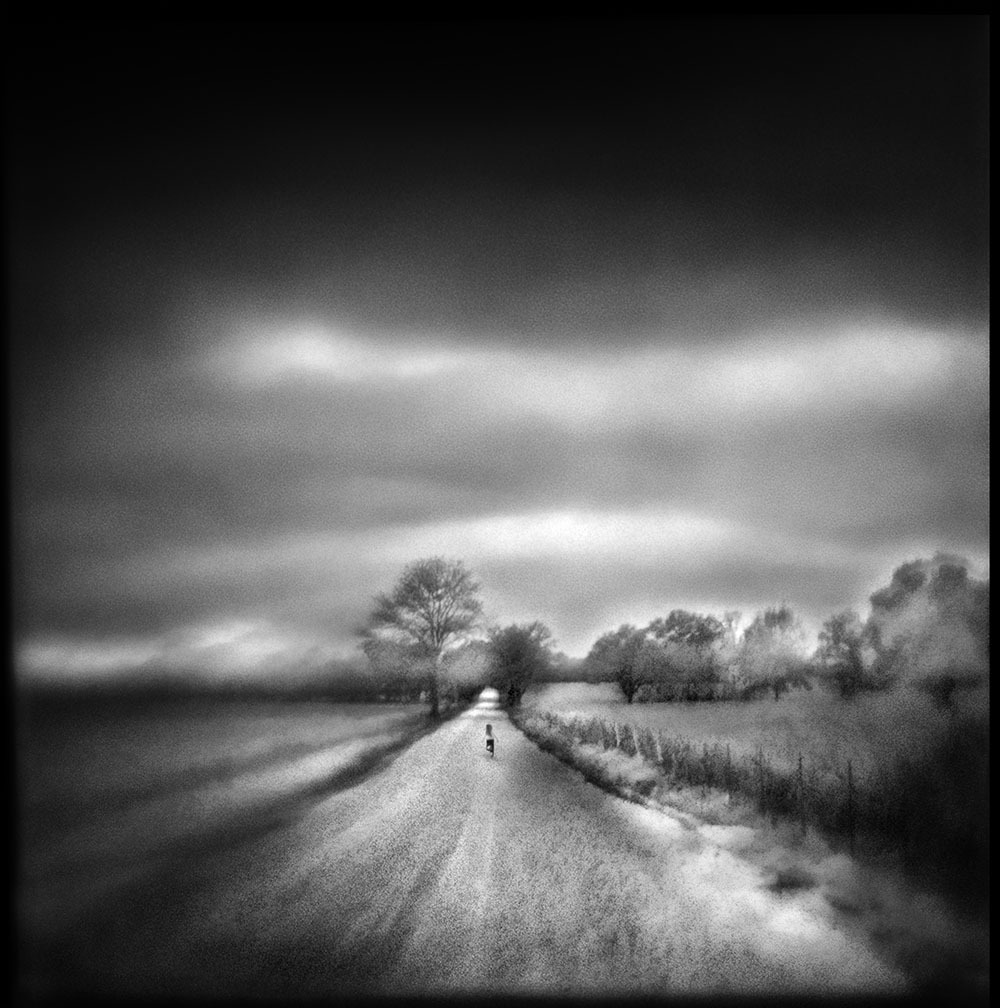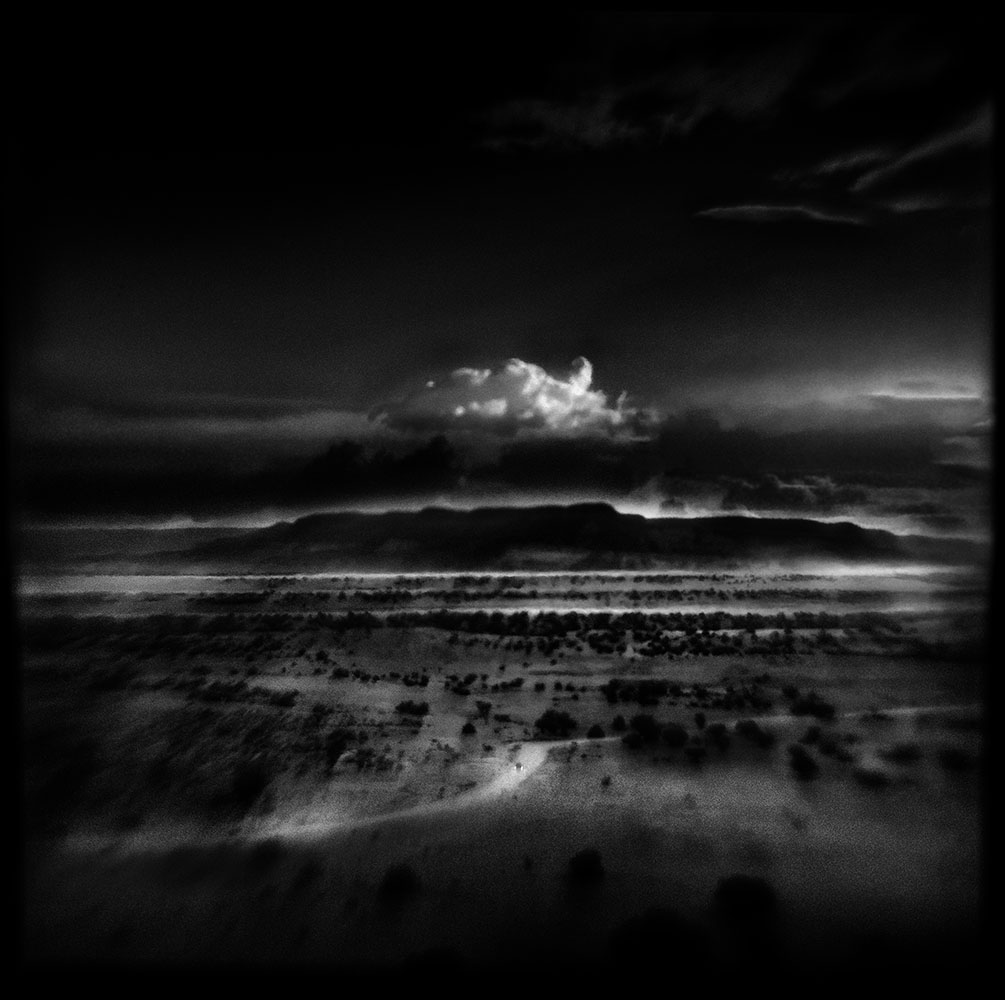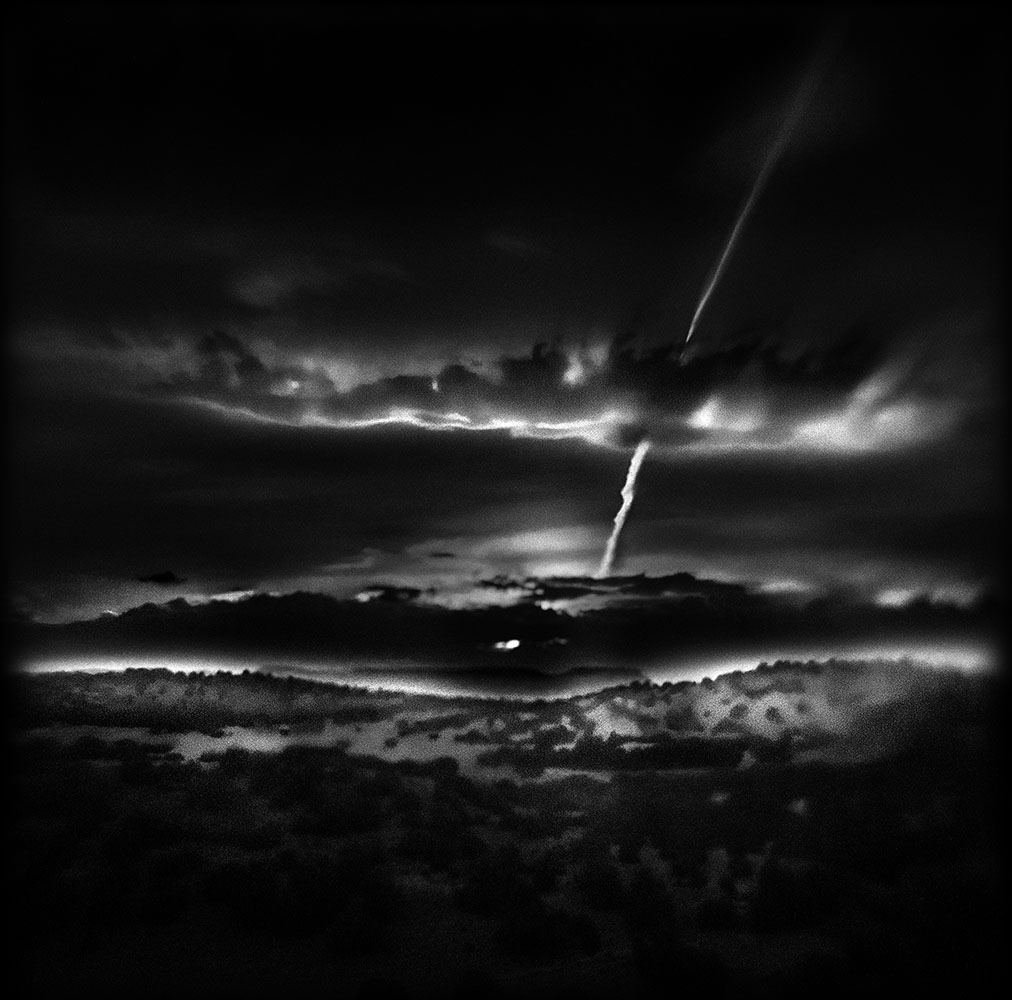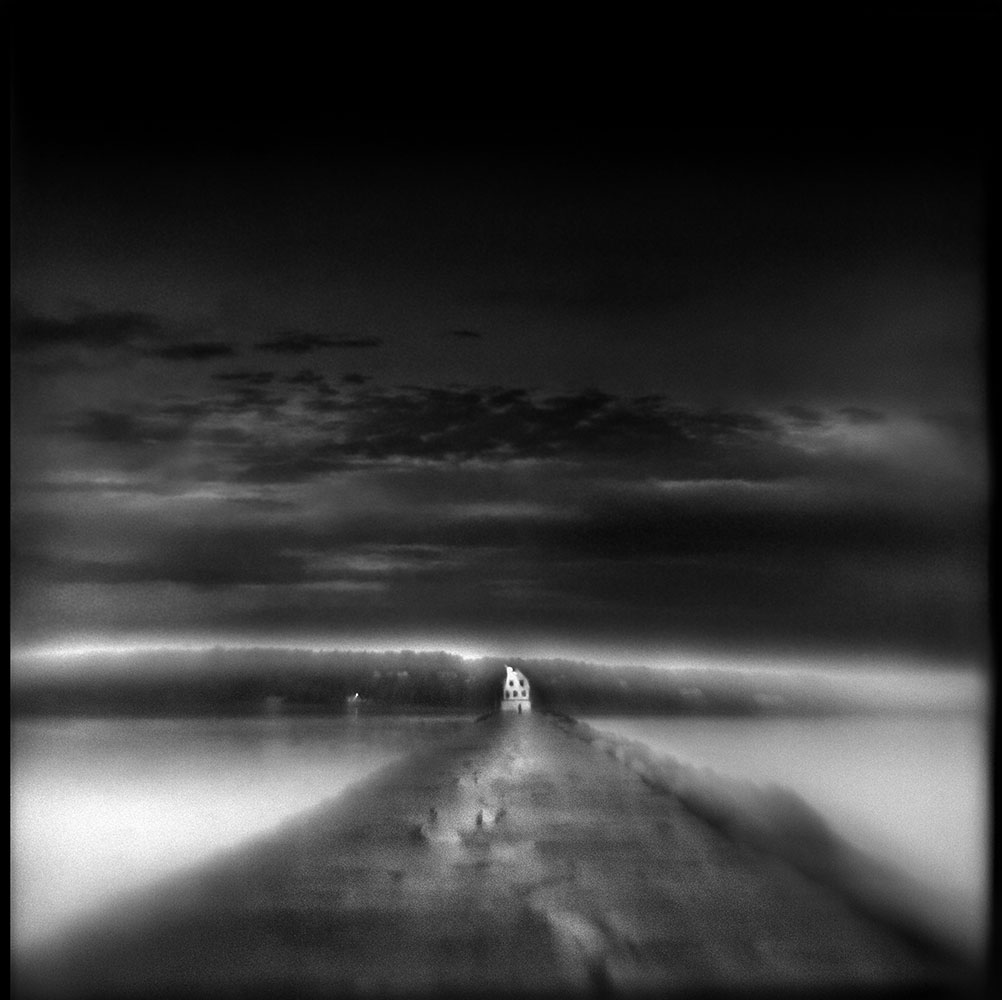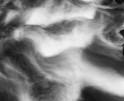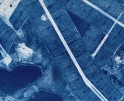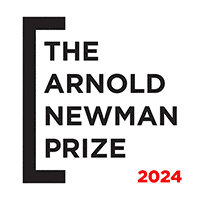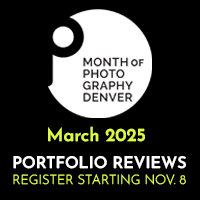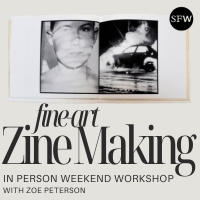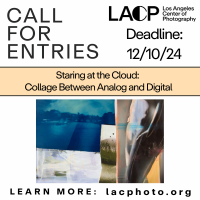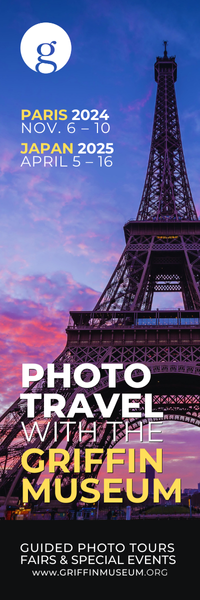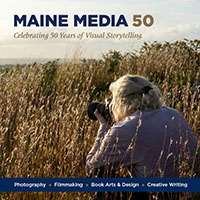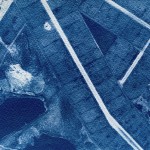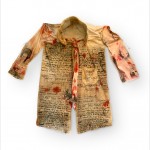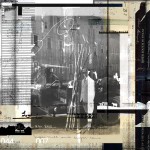Susan Burnstine: Absence of Being
I’m not exactly sure of the year, but in the early 2000’s I took a Keith Carter workshop at the Los Angeles Center of Photography and met my fellow classmate and Angeleno, Susan Burnstine. I’ve had a ringside seat to her amazing trajectory over the years and watched her list of achievements grow, her roster of galleries multiply, her sought after workshops expand to places around the world, and several weeks ago, had the great pleasure of experiencing her second monograph, Absence of Being. None of this was achieved without hard work, determination, and dedication. Susan lives a rich photographic life, sharing her wisdom and insights while continuing her own photographic legacy with well-collected photographs that are at once deeply personal and universally evocative.
Her new book, Absence of Being, published by Damani and funded by a remarkable print sale campaign, is an artwork unto itself. All elements of the book were well-considered, from paper choice to design to text, creating an elegant platform to showcase meaningful work. Susan has a line-up of exhibitions, book signings, lectures and workshops that will accompany the release of the book and that list is featured at the end of this post. An interview with Susan follows.
Susan Burnstine is an award winning fine art photographer originally from Chicago now based in Los Angeles. Susan is represented in galleries across the world, widely published throughout the globe, conducts workshops internationally and has also written for several photography magazines, including a monthly column for Black and White Photography Magazine (UK).
Burnstine is one of the few photographers today avidly pursuing alternative processes to create an idiosyncratic and deeply personal visual landscape. Initially, Burnstine sought to find a way to portray her dream-like visions entirely in-camera, rather than with post-processing digital manipulations. To achieve this, she has created twenty-one hand-made film cameras and lenses that are frequently unpredictable and technically challenging. The cameras are primarily made out of plastic, vintage camera parts, and random household objects, with single-element lenses molded from plastic and rubber. Learning to overcome their extensive optical limitations required Burnstine to rely on instinct and intuition—the same tools that are key when attempting to interpret dreams.
She has had over 25 solo exhibits internationally and her work is held in numerous museum and private collections, including: The Museum of Photographic Arts, San Diego, Ca; The Museum of Fine Arts, Houston, Texas; The University of Maine Museum of Art, Bangor, Maine; The University of Texas Jerry and Marilyn Comer Collection, Dallas, Texas; The Candela Collection, Richmond, Virginia; Res Med, San Diego, CA; The Capital Group, Los Angeles; Unire Real Estate Group, Brea, CA; The Dalad Group, Independence, Ohio; and Elgea Inc, Montreal, Canada.
ABSENCE OF BEING
A plane disappears into the clouds. We can’t see it, hear it or touch it, but we know it’s there. Our senses can give us no tangible evidence it continues to exist. But still, we know beyond a shadow of a doubt it’s there. We suspend limitations of our senses, and believe.
When a person dies, do they simply cease to exist because they no longer have a physical presence? Or do they remain with us through the remnants of the lives they lived? When a building is razed, is it truly obliterated, or does its imprint remain in the collective unconscious?
This ongoing series explores how the past remains with us, if only in shadows. These images capture fleeting memories, spotted from the corner of an eye that vanish the moment we turn to really look. And yet they remain, for the imprint remains with us. We are living in the present, but the past reminds us that it is part of us, too, as is the future, and we of them.
With this body of work as with my former series, I captured these visions entirely in-camera using a collection of hand-made film cameras and lenses that are frequently unpredictable and technically challenging. The cameras are primarily made out of plastic, vintage camera parts and random household objects and the single element lenses are molded out of plastic and rubber. Learning to overcome their extensive limitations has required me to rely on instinct and intuition – the same tools that are key when trusting in the unseen.–Susan Burnstine
Congratulations on the book! Can you tell us how it came about and share your unique approach to fundraising?
Thank you, so much Aline. The fundraising was a bit of a wild ride. I considered avenues like Kickstarter, but opted to offer three different 8×8 fundraiser prints at an edition of 75 and was able to raise a significant amount needed. I also produced a limited edition 10x10x10 portfolio that included ten 10×10 prints in a beautiful custom clamshell box that Jace Graf at Cloverleaf Press produced. And lastly, every print sold through my galleries and every workshop I taught through the course of a three-month fundraising period helped me raise the $35,000 I needed to design and produce the book. It was an incredibly stressful and potentially risky way to raise the money. But it proved to be immensely rewarding since the book was brought to life because of a group of amazing collectors, friends and students that generously supported the project.
Let’s talk about the design of the book–first tell us about the paper–the weight and feel of it almost replicates an actual print….
The selection of paper was probably the easiest part of the design process. During my first Skype chat with the publisher of Damiani, Andrea Albertini, he expressed that the paper used in my first book was the closest match to my edition prints, which are rich in blacks and printed on heavy, textured stock. He had access to the same paper since Within Shadows was also printed in Italy, so the selection of paper stock was resolved in a matter of minutes.
Two particular elements that I so appreciated about the design are the end papers and the use of your own handwriting. It really personalizes the experience. Can you speak to the design process?
For this book, I wanted to find a designer who could convey the personal elements and aesthetics of my work in a unique way, but I didn’t know where to start. So I asked Melanie McWhorter to consult with me since she knows photo books better than anyone. She considered who might be a good aesthetic match and had one name for me… Masumi Shibata.
Ever since I began contemplating this book, I was certain I wanted to weave in two elements; excerpts from my handwritten journal entrees and physical attributes of my homemade cameras. After Masumi viewed an image of one of my homemade cameras, we shared one of those odd, unexplainable synchronistic moments – we literally suggested using black tape on some pages at the same time. Then we toyed with other parts of the cameras to integrate in the design. When I explained that I use black cinema foil as skins to cover my cameras, he suggested photographing the texture and we ended up using it for the end papers and back cover.
The handwritten journal excerpts ended up being a bit of a bumpy ride. I knew in my heart they had to be part of this book, but most felt it was a risk to expose myself in such a raw manner. But with every resistant perspective, I fought harder to get them included.
And then a funny thing happened… I sent samples of my handwritten journal excerpts to Masumi and he felt my penmanship did not aesthetically match my imagery. We went back and forth about this for months and we remained at a standstill until he suggested using someone else’s handwriting that made sense with the design. Initially, I could not get my heard around the idea of having someone else write my words. But then an idea hit me as I combed through a selection of inscriptions that some photographer friends wrote in their monographs… I convinced Michael Crouser and Traer Scott to rewrite a few of my journal excerpts . Masumi viewed both of their samples and was sold on Traer’s handwriting so she graciously agreed.
Looking back on the experience, Traer proudly admits that it was a role she had prepared for since winning the “Best Handwriting Award” in Miss Weather’s 4th grade class. And ironically, if you view a signed copy of my book and compare my signature with Traer’s handwriting on the introductory title page, most think it’s hard to tell our penmanship apart. Of course, hers is much nicer … but in a quick glance, they are strangely similar. Go figure.
So much of your subject matter is shot in cities and features memorable architecture, but the book ends with spectacular New Mexico landscapes. Does this sequencing mirror your journey in finding the essence of home?
The last two images were shot in Alaska, but there are a number of images from New Mexico toward the end of the book.
Thank you for your keen perception, Aline. The final images do mirror my conscious and unconscious search to find the essence of home. For me, the journey remains a solitary, open-ended one that has no concrete answers since the driving force behind my work revolves around the unanswerable questions of life, death and mortality. So I opted to end this six-year chapter of my life with open-ended imagery that represents that driving theme metaphorically.
Most of the photographs in the book are without people, which possibly reflect the idea of place as self-portrait. Was this intentional? Are you moving in a more place driven focus?
Actually, if you look closely there are people in a large percentage of the images. These human figures or resonance of human life in the form of passing cars are very small and are almost always captured as a solo figure. These tiny, human figures represent how I experience and view the world following the loss of my family.
Perhaps I should backtrack a minute for those who don’t know my process… All of my work is sparked from night terrors that I’ve been grappling with my entire life. My mother taught me to recreate my dreams in painting, sculpture, drawing and any art form in an attempt to help me cope with the ramifications of these nightmares when I was a child. As an adult, whenever someone close to me dies, the terrors return. When I travel, they are profoundly worse since I’m out of my comfort zone. And whenever I view these unknown cities and landscapes, I’m compelled to find for an element of the past within every shadow in hopes of finding a resonance of family and home.
The vast, cloud-ridden skies also play an important role in these images. They represent many things, most notably the sense of my father looking down on me from above. Essentially, these nostalgic cities and landscapes have little to do with the actual place it represents. The essence of every image is about searching for roots in unchartered lands and they also express my internal and external journey through symbols and metaphors found within these happened upon scenes.
What did you feel when you held the physical book for the first time? Was it a different experience from your first book?
They were very different experiences. The first book was a celebratory event that was shared with a number of people as soon as it arrived. But for this book, I wasn’t able to afford to travel to Italy to be on press, so the publisher sent ten massive test sheets to Los Angeles for me to approve. When I unrolled these huge sheets and viewed them for the first time, I sat there for ten minutes with my mouth agape, just saying “wow” over and over again. I was blown away.
When the final bound copy arrived weeks later, I sat with it for days before I told anyone it arrived and it took another week before I showed it to anyone else. Despite being near perfect, viewing this book in its final form was overwhelming since it represented a significant chapter of my life ending. But I was very proud of how well it turned out.
Have your cameras evolved over time?
Yes. I have built 23 cameras over the past eleven years. The first homemade prototype was ridiculously simplistic, and to be frank, quite shoddily made. Prototype #1 jammed up and fell apart all the time, so I started various carrying tools, duco cement, photo tape, etc to perform emergency surgery on it almost every time I used it.
I’ve continued to perfect the lenses, shutter speeds, and I have also been able to create a simplistic, rudimentary slr viewfinder that has assisted me in creating more accurate compositions. They are not viewfinders that everyone else is used to… they are just mirrors that have been arranged to bounce rudimentary images that resemble shadows more than accurate representations of scenes. The cameras typically take me 40-60 hours to make, but I continue to contemplate and/or develop upgrades.
Are you on to something new or are you going to enjoy the celebration of this work?
I’ve been quietly working on something for the past 6 months or so and have been trying to stretch my legs a bit. Not sure what will become of it, but stretching is always good.
And finally, describe your perfect day. I’m sure your dog, Raven, would be a part of it.
I don’t think Raven would let me have a perfect day without her – to call her demanding would be an understatement. But yes, I’d start the day out with Raven performing her usual wake up routine which includes crawling all over me and kissing my face obsessively… not licking my face mind you, kissing. She compulsively nibble kisses your face like she’s sucking on a lemon in hyper speed. Nothing makes me laugh more. Then I’d venture out to make some perfectly imperfect photographs for a bit. And after that, I’d take Raven out on a long, majestic hike with close friends. The next part would be hard to pull off in the same day, so I’d have to teleport from Los Angeles to my hometown of Chicago where I’d devour a few slices of my favorite deep-dish pizza while dangling my feet off the North Avenue Pier and listening to Lake Michigan lap across the beachfront. Perfection.
Thank you so much, Aline!
Upcoming Exhibits and Events
October 13th 6-8pm – Lecture and book signing at SF Camerawork, San Francisco, CA
October 22nd 12:00-1:30pm – book signing at Medium Festival, San Diego, CA
November 13, 3pm – In conversation with Chantel Paul and a Book signing at Book Soup West Hollywood, CA
December 2nd – Exhibit opening Verve Gallery of Photography Santa Fe, NM
December 3rd – Lecture and Book signing, Verve Gallery of Photography
December 9-10th – PhotoNola 2 day Workshop
December 11th – Lecture and Book Signing at The Historic New Orleans Collection for PhotoNola
January 14-15, 2017 Houston Center of Photography 2 day Workshop
January 14, 2017 – Solo exhibit at Catherine Couturier Gallery and book signing 5-7pm, Houston, TX
Copies of the book are available for purchase at:
Signed copies can be purchased through my website in the books section
And also through a few of my gallery representatives:
Trade copies are available on amazon.com
And through Damiani in Italy
Posts on Lenscratch may not be reproduced without the permission of the Lenscratch staff and the photographer.
Recommended
-
Interview with Owen McCarter and Drew Leventhal: “The Three-Eyed Fish” and Independent Photo Book PublishingNovember 20th, 2024
-
Kari Varner: Blueprints for Slaughter and GroundworkNovember 14th, 2024
-
Ryan Peter: Autograms – The Intersections of Drawing, Painting, and PhotographNovember 8th, 2024
-
Susan Isaacson: At Silver LakeOctober 3rd, 2024
-
Logan Gibson Davis: Clarence, Go Tell the Bees and Blueberries and Apple TreesSeptember 28th, 2024

